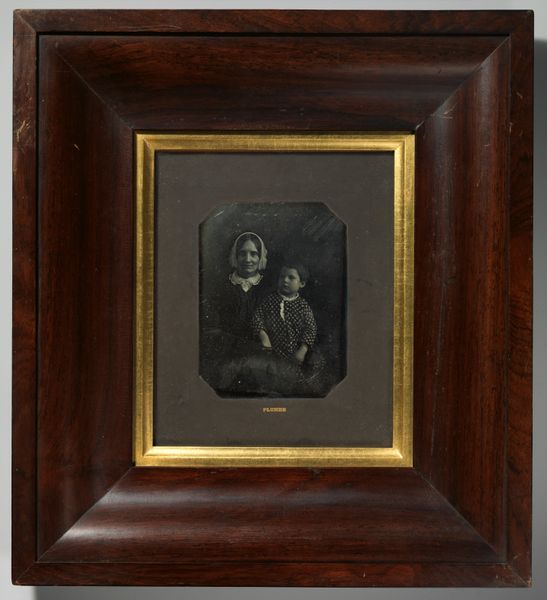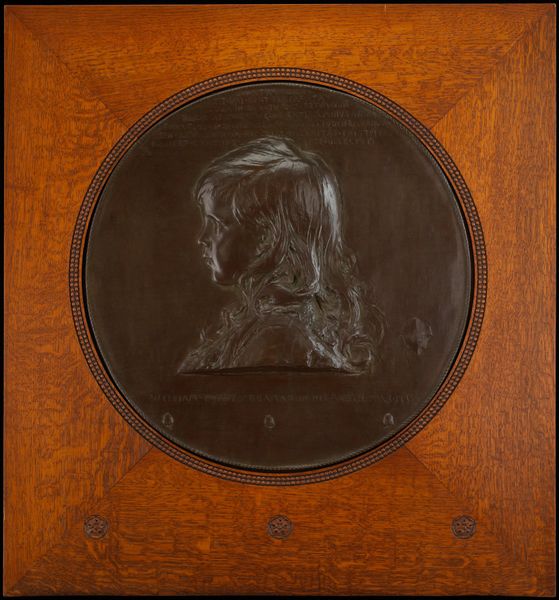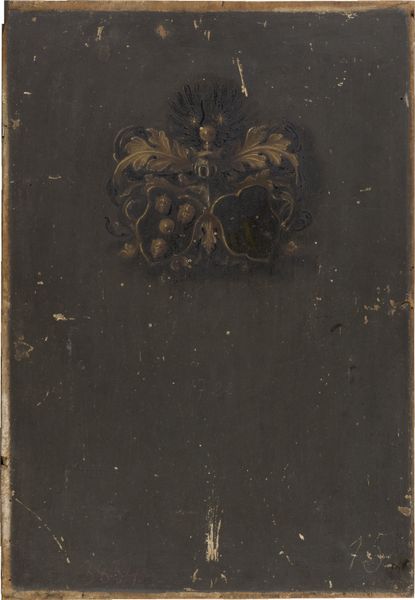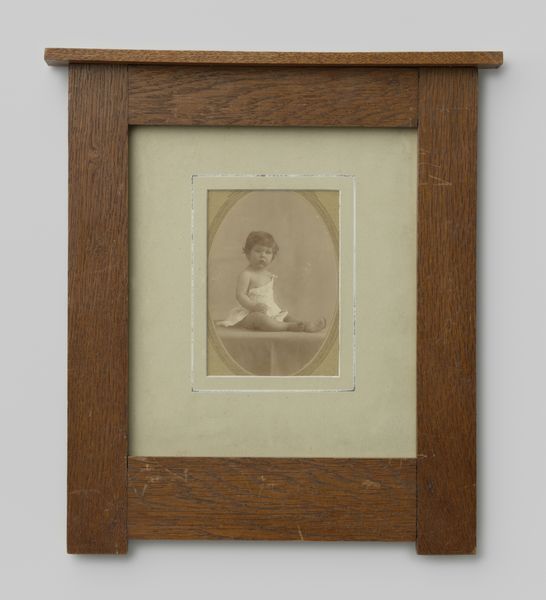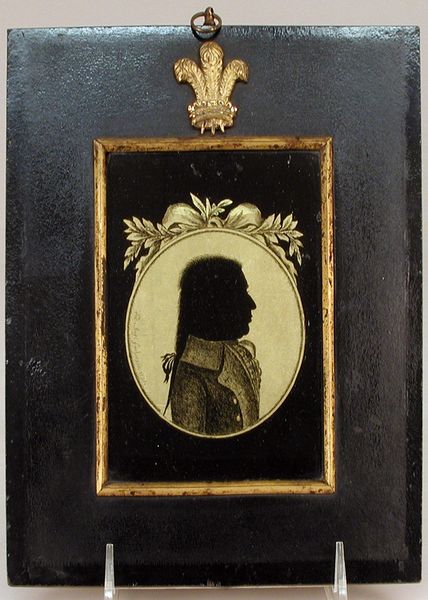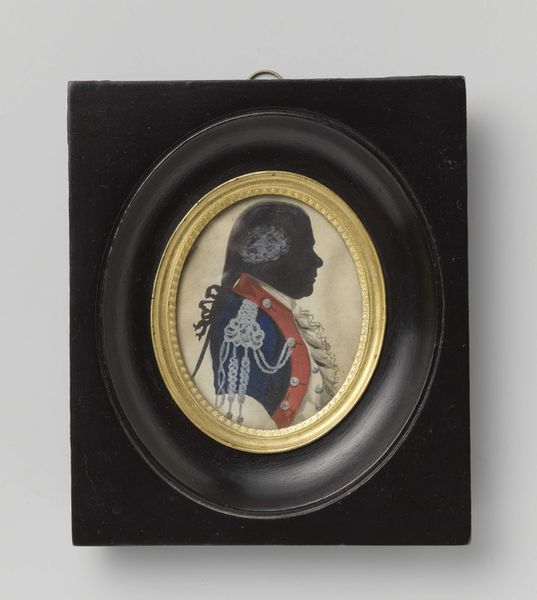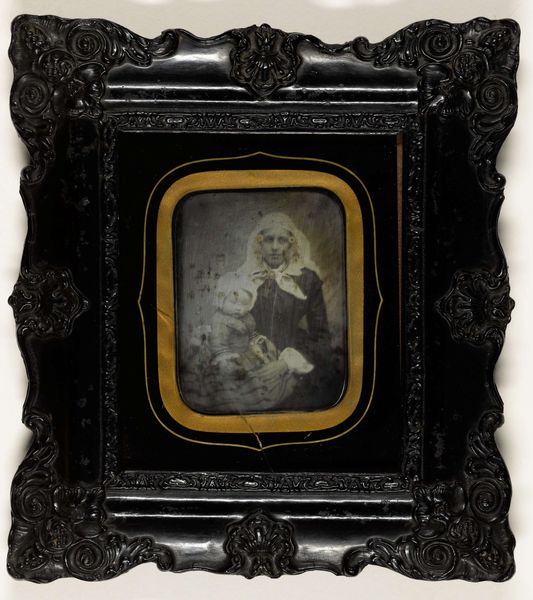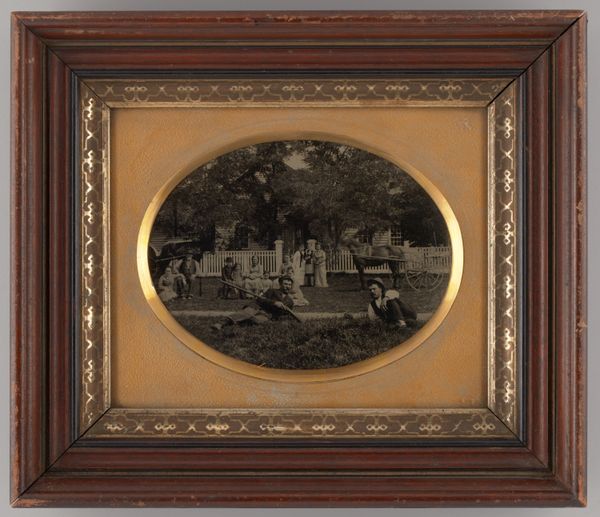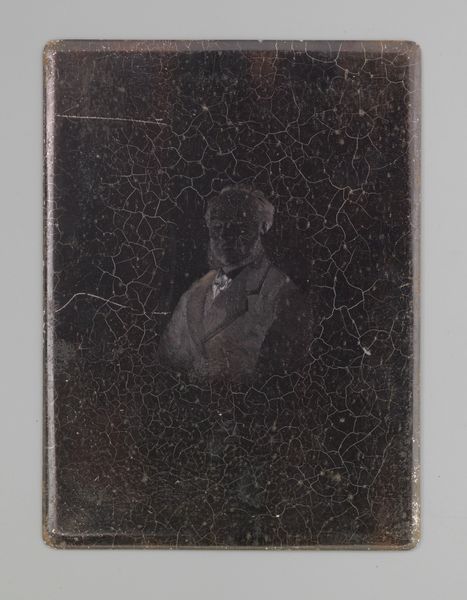
Elizabeth Bakewell James and her Son, Frank B. James 1845 - 1848
0:00
0:00
daguerreotype, photography
#
portrait
#
daguerreotype
#
photography
#
romanticism
Dimensions: Image: 11.9 x 8.9 cm (4 11/16 x 3 1/2 in.) Mat: 18.4 x 14.9 cm (7 1/4 x 5 7/8 in.) Frame: 34.8 x 31.3 cm (13 11/16 x 12 5/16 in.)
Copyright: Public Domain
John Plumbe Jr. created this daguerreotype, a photographic process popular in the mid-19th century, capturing Elizabeth Bakewell James and her son, Frank. The composition is formal, with a rigid structure of vertical and horizontal lines that compartmentalizes the subjects. Notice how the tonal range is carefully calibrated, from the deep blacks of the background to the silvery highlights on their faces. The contrast emphasizes the textures of their garments, inviting a tactile engagement despite the photograph's smooth surface. Plumbe's work reflects the semiotic codes of the time, where portraiture functioned as a signifier of social status and familial bonds. The subjects' attire and posture communicate an adherence to societal norms, yet the photograph's inherent ability to capture detail also provides a glimpse into their individual identities. The rigid composition and tonal contrasts serve not only an aesthetic purpose but also reflect the cultural values of representation and identity in the 19th century, revealing the photograph's function within a broader historical discourse.
Comments
No comments
Be the first to comment and join the conversation on the ultimate creative platform.
